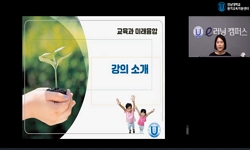청소년을 위한 학교 흡연예방 프로그램은 사회심리 이론에 근거한 프로그램이 대체로 성공적이었다고 알려져 있으나, 각 프로그램의 효과 정도에는 많은 차이가 있다. 이 연구는 다른 메타 ...
http://chineseinput.net/에서 pinyin(병음)방식으로 중국어를 변환할 수 있습니다.
변환된 중국어를 복사하여 사용하시면 됩니다.
- 中文 을 입력하시려면 zhongwen을 입력하시고 space를누르시면됩니다.
- 北京 을 입력하시려면 beijing을 입력하시고 space를 누르시면 됩니다.

A meta-analysis of adolescent psychosocial smoking prevention programs in the United States = 사회 심리 이론에 근거한 학교 흡연 예방 프로그램의 메타분석: 미국 사례와 Explanatory Variables
한글로보기https://www.riss.kr/link?id=A76159907
- 저자
- 발행기관
- 학술지명
- 권호사항
-
발행연도
2007
-
작성언어
English
- 주제어
-
등재정보
KCI등재
-
자료형태
학술저널
- 발행기관 URL
-
수록면
1-21(21쪽)
- 제공처
-
0
상세조회 -
0
다운로드
부가정보
국문 초록 (Abstract)
1. 8-12학년 학생들보다는 초등학교에서 중등학교로 바뀌는 5-7학년 학생들에게 흡연예방 프로그램은 더 효과가 있었다.
2. 연구 방법론에 있어서는 experimental design, random assignment, 순수 비교그룹을 사용하였을 경우, implementation fidelity와 instrument reliability가 높은 경우, 또는 10% 미만의 attrition rates일 때 프로그램 효과도 (effect size)가 더 높게 나타났다.
3. 프로그램 실행 시 또래 리더를 사용하였을 경우, 알코올 등 다른 약물을 배제한 담배만을 중점적으로 다루었을 경우, 적어도 10회 이상 연속적으로 이루어지거나 프로그램 종료 후 일년 뒤에 추가 프로그램이 주어진 경우가 더욱 효과적이었다.
청소년을 위한 학교 흡연예방 프로그램은 사회심리 이론에 근거한 프로그램이 대체로 성공적이었다고 알려져 있으나, 각 프로그램의 효과 정도에는 많은 차이가 있다. 이 연구는 다른 메타 분석처럼 전체적인 프로그램 효과도를 측정하여 일반적인 결론을 유도한 것이 아니라, 프로그램의 효과와 관계가 깊은 요인 (Explanatory Variables)을 자세히 파악하여 보건교육 담당자, 연구원, 또는 정책 결정자들에게 구체적인 가이드라인을 제공하는 데에 목적을 두고 있다. 주요한 연구결과는 다음과 같다.
1. 8-12학년 학생들보다는 초등학교에서 중등학교로 바뀌는 5-7학년 학생들에게 흡연예방 프로그램은 더 효과가 있었다.
2. 연구 방법론에 있어서는 experimental design, random assignment, 순수 비교그룹을 사용하였을 경우, implementation fidelity와 instrument reliability가 높은 경우, 또는 10% 미만의 attrition rates일 때 프로그램 효과도 (effect size)가 더 높게 나타났다.
3. 프로그램 실행 시 또래 리더를 사용하였을 경우, 알코올 등 다른 약물을 배제한 담배만을 중점적으로 다루었을 경우, 적어도 10회 이상 연속적으로 이루어지거나 프로그램 종료 후 일년 뒤에 추가 프로그램이 주어진 경우가 더욱 효과적이었다.
다국어 초록 (Multilingual Abstract)
A decrease of adolescent smoking behaviors is associated with the following factors:
a. Younger students (5<SUP>th</SUP>-7<SUP>th</SUP>) than older students (8<SUP>th</SUP>-12<SUP>th</SUP>).
b. Research methodology using true experimental design, quasi experimental design with equivalence between groups, use of random assignment, 10% or less attrition rate, use of a no treatment control group, high implementation fidelity, and/or acceptable instrumentation reliability
c. Programs using trained peer leaders, targeting cigarette smoking only, implementing 10 or more treatment sessions and/ or providing booster sessions.
Adolescent psychosocial smoking prevention programs have been successful, but limited in the magnitude of program effects. The present study is the secondary analysis after the previous study estimated mean effect sizes in smoking knowledge, attitudes...
Adolescent psychosocial smoking prevention programs have been successful, but limited in the magnitude of program effects. The present study is the secondary analysis after the previous study estimated mean effect sizes in smoking knowledge, attitudes, skills, and behaviors with treatment variables. Regardless of overall program effect estimations that other meta analysis studies have done, this study is conducted to identify explanatory variables that are likely to increase program effects.
A decrease of adolescent smoking behaviors is associated with the following factors:
a. Younger students (5<SUP>th</SUP>-7<SUP>th</SUP>) than older students (8<SUP>th</SUP>-12<SUP>th</SUP>).
b. Research methodology using true experimental design, quasi experimental design with equivalence between groups, use of random assignment, 10% or less attrition rate, use of a no treatment control group, high implementation fidelity, and/or acceptable instrumentation reliability
c. Programs using trained peer leaders, targeting cigarette smoking only, implementing 10 or more treatment sessions and/ or providing booster sessions.
목차 (Table of Contents)
- Ⅰ. Introduction
- Ⅱ. Methods
- Ⅲ. Results
- Ⅳ. Discussion
- References
- Ⅰ. Introduction
- Ⅱ. Methods
- Ⅲ. Results
- Ⅳ. Discussion
- References
- ABSTRACT
- 〈국문초록〉
동일학술지(권/호) 다른 논문
-
- 한국보건교육건강증진학회
- Young-Bok Kim
- 2007
- KCI등재
-
- 한국보건교육건강증진학회
- Mi-Ra Lee
- 2007
- KCI등재
-
- 한국보건교육건강증진학회
- 이효영
- 2007
- KCI등재
-
- 한국보건교육건강증진학회
- 이희경
- 2007
- KCI등재




 DBpia
DBpia





